 |
Concise history from Phil Butler's "War Prizes":
AM222 Messerschmitt Me 163B WNr 191907
Aircraft of JG 400. Surrendered at Husum and shipped to the RAE. Despatched from Farnborough to No. 6 MU, Brize Norton, on 8th August 1945. Recorded at No. 6 MU in the Census of 21st March 1946 and allocated to No 76 MU, Wroughton, on 30th April 1946 for crating and shipment to Australia. This aircraft was displayed at RAAF Point Cook for many years but was transferred to the Australian War Memorial for refurbishment in 1986, for eventual display. It is currently in the AWM Mitchell Annex in Canberra.
In 1971 the RAAF Museum at Point Cook requested the loan of both the Me 262A-2a and Me 163B of the Australian War Memorial. At the AWM, the Me 262 had just been replaced by a CAC Wirraway. The aircraft were both delivered to Point Cook. Tom Gilbert was in the RAAF at that time and recalled taking the Komet out of its shipping crate in 1971. He was told that the aircraft had been packed in 1946 and this was the first time it had been out. The packing case had been used as a hiding place for many years as they found old beer cans (empty) and playing cards in there! The Komet was then assembled. Several of the instruments as well as the generator were gone. But the aircraft was generally in good condition. This Komet was the last one around in original colors.
The following photo was kindly provided by David Payne, who made it at Point Cook during an open day in either 1971 or 1972.
 |
The photos below show 191907 in its original wartime colors in front of the hangars at RAAF Point Cook.
 |
 |
 |
Two more photos showing 191907 apparently during an open house, likely at RAAF Point Cook.
 |
 |
Alan Scheckenbach provided the following four unique photos. The Komet is parked outside together with an Me 262, an Avon Sabre and a Vampire or Venom trainer, possibly in preparation of some sort of public display?
 |
 |
 |
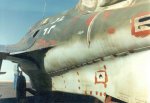 |
Alan Scheckenbach also provided the following set of black and white photos made by the RAAF. The photos are dated 12 May 1976, which suggests they were made just before the restoration (as discussed below) started. Some of the photos show stenciling that was not known to be applied to Komets. Unique historic material!
 |
 |
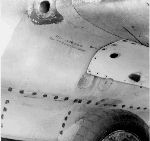 |
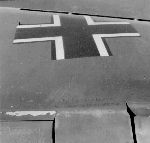 |
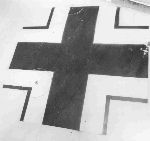 |
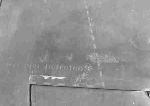 |
 |
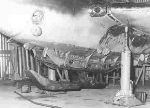 |
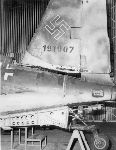 |
 |
The photos of 191907 show a large number of interesting details:
It appears that the airframe was partially preserved during shipment using adhesive tape. When the pieces of tape were removed, the camouflage paint was partly lifted, and a red primer appeared. This can be seen around the canopy, on the rear fuselage, and on the skid fairing.
On the rear fuselage, all openings appear to have been covered with square patches of some kind of material, and tape applied to the edges. This leaves square outlines of red primer.
It appears that all paint (including red primer) was pulled off the last frame on the left side (roughly below the '0' of the Werknummer)
A bit of a puzzle is why the skid fairing shows so much paint damage. I see four possible explanations. The first is that the panels were removed at some stage, requiring the removal of filler applied over the rivets/fasteners, revealing the red primer. However, the red paint around the upper row of fasteners extends on the fuselage, which makes this option unlikely. The second is that the fairing was taped extensively, and that the tape pulled off the paint plus filler. Again the above observation contradicts this. The third is that oxidation made the paint peel off, but this is not observed on any other Komet. The fourth is that red oxide primer was painted over to prevent corrosion, but again this is not observed on any other Komet.
The camouflage colors and the pattern were recorded with great accuracy in The Official Monogram Painting Guide to German Aircraft 1935-1945 by Ken Merrick and Thomas Hitchcock (Ken Merrick lived in Australia at the time). This is the only Komet camouflage that has been recorded accurately.
Peter Kormos contributed the following observations:
The wing root panels both on the lower and upper side are possibly swapped with another plane.
It seems to have had 'late war RLM76' (which is greener than the original RLM76, aka 'RLM84') on the lower surfaces with light overspray with original RLM76. You can note the tonal difference around the stencils (almost a tan color) and in some places of the fin. There are also color differences between the fuselage and wing's lower surface, and the wing root cover.
J.R. Smith and J.D. Gallaspy report the following in 'Luftwaffe camouflage and markings 1935-45 Volume 3':
"There is little doubt about the Point Cook Me 163's undersurface color, as once cleaned up a little, a representative sample corresponded exactly with an actual sample of 76 from an L Dv 521 chart."
"At the same time the dark green on the Me 163, the lighter of the two upper surface colors, matched exactly the darker green on the same Do 335 [NASM, before restoration] as well as dark green camouflage paint on an Me 163 in Canada and an Arado Ar 234B-2 (ex FE-1010) now at Silver Hill"
"There was a second upper surface color on the Me 163, however, a rather difficult to describe dark brown or brownish green which checked out exactly with a number of actual color samples from aircraft to which the authors had access." [followed by a lengthy discussion which doesn't add much to the color description]
"To add one telling fact, since the Point Cook Me 163's two upper surface colors were, at the time of inspection mid-1976, beautifully preserved under a thin layer of wax [snip] this machine's color scheme as shown on page 114 was almost certainly free from even the most minor oxidation and was as authentic then as it was on the last day on which it saw squadron service"
"To summarize an extended but highly rewarding line of investigation, it can now be stated that the Point Cook Me 163B-1a was, until repainted in late-1976, probably the most authentic if not the only specimen of a surviving Luftwaffe fighter still left in its original German 81/82/76 finish" [Note that at that time RLM81 was identified as Braunviolett or Dunkelgrün FS 24087, and RLM82 was Dunkelgrün FS 34096]
"The yellowish-green color on the fin was only primer paint used as camouflage"
In 1975 the RAAF offered to restore the Komet. What happened exactly, and whether permission was granted, is yet to be discovered, but in 1976 it was completely repainted, destroying a unique piece of history. But not all is lost, since the original paint is hiding underneath the new paint layer; it wasn't stripped off. After the first repainting it was put on display in the renewed Royal Australian Air Force museum. The aircraft is the foreground is a 'Pika' manned prototype for the Jindivik target drone.
 |
Between 1986 and early 2001, the Australian War Memorial Komet was located in the AWM's storage and restoration facility, officially called 'Treloar Technology Centre' but often referred to as the 'Mitchell Annex'. It is located in the northern part of the city of Canberra, and hundreds of pieces are located here, some in need of work, others just not yet on display. The facility is opened to the public on Wednesdays and Sundays.
David D. Brown (webmaster of the Me 262 'Black X' site) sent these two photographs of the Australian Komet, made in 1999. They give a good impression of its state and the storage conditions.
 |
 |
Daniel Leahy kindly sent the two photos shown below. He shot them in April 2000, and they nicely show the crowded storage facility.
 |
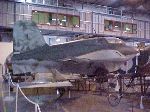 |
Darren Howie was kind enough to send the photo report shown below. It shows the Komet in April 2001, with additional markings painted on. Darren reported that the lighting conditions (a mix of Mercury vapor lamps and fluorescents) were very difficult for photography. A little red was filtered from the photos, in an attempt to obtain more realistic colors.
 |
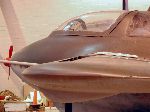 |
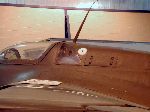 |
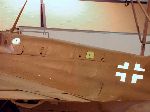 |
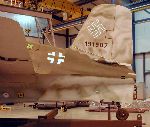 |
 |
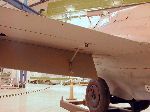 |
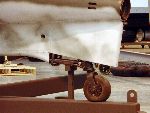 |
 |
 |
Komet 191907 was transferred to the actual War Memorial early 2001, after the completion of Anzac Hall (an extension recently added to the main AWM building). The AWM is located in the middle of Canberra and this is where most public displays are located.
Daniel Leahy supplied the very first photos showing the Komet on display. They give a good impression of the AWM display. These photos are the first that clearly show that two tops colors were used during the repainting, a dark green, and a brownish green.
 |
 |
Alan Scheckenbach sent the following set of highly interesting cockpit photos. They show that the cockpit is largely in a fantastic condition.
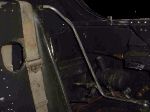 |
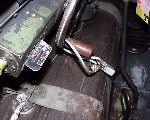 |
 |
 |
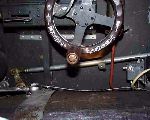 |
 |
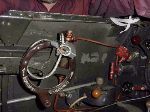 |
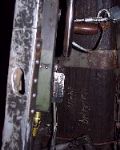 |
 |
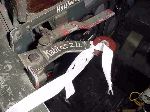 |
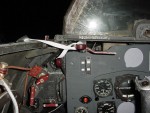 |
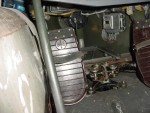 |
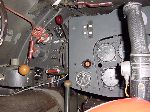 |
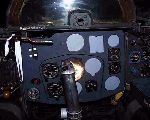 |
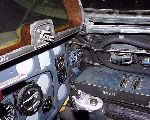 |
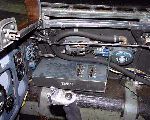 |
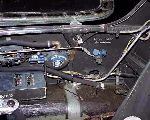 |
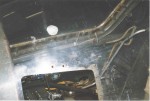 | ||
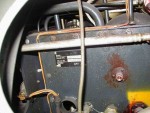 |
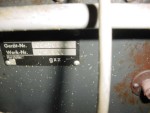 |
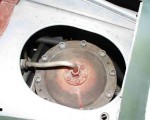 | |
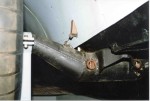 |
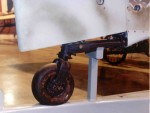 |
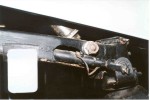 | |
 |
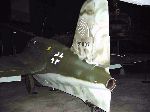 |
Kon Kalogeropoulos is a regular visitor of the Australian War Memorial. Kon writes that he was not able to get close to the Komet as it is only viewable from a balcony several meters up. This viewing point does have the advantage that it shows the wing camouflage pattern very clearly. It is now clear that the original camouflage as recorded by Ken Merrick was copied largely, but not completely. Another interesting point not seen before are that the wing root panels have been removed. This gives a unique view of the MK 108 cannon installation.
 |
 |